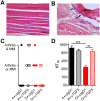Dysregulated TGF-β Production Underlies the Age-Related Vulnerability to Chikungunya Virus
- PMID: 27736984
- PMCID: PMC5063327
- DOI: 10.1371/journal.ppat.1005891
Dysregulated TGF-β Production Underlies the Age-Related Vulnerability to Chikungunya Virus
Abstract
Chikungunya virus (CHIKV) is a re-emerging global pathogen with pandemic potential, which causes fever, rash and debilitating arthralgia. Older adults over 65 years are particularly susceptible to severe and chronic CHIKV disease (CHIKVD), accounting for >90% of all CHIKV-related deaths. There are currently no approved vaccines or antiviral treatments available to limit chronic CHIKVD. Here we show that in old mice excessive, dysregulated TGFβ production during acute infection leads to a reduced immune response and subsequent chronic disease. Humans suffering from CHIKV infection also exhibited high TGFβ levels and a pronounced age-related defect in neutralizing anti-CHIKV antibody production. In vivo reduction of TGFβ levels minimized acute joint swelling, restored neutralizing antibody production and diminished chronic joint pathology in old mice. This study identifies increased and dysregulated TGFβ secretion as one key mechanism contributing to the age-related loss of protective anti-CHIKV-immunity leading to chronic CHIKVD.
Conflict of interest statement
I have read the journal's policy and the authors of this manuscript have the following competing interests: Gary D. Coleman is a paid employee of WIL Research. Two of the authors, Jennifer L. Uhrlaub and Janko Nikolich Zugich, are designated co-inventors on a provisional patent application that includes TGFβ blocking strategies during alphavirus infection. JNŽ is an unpaid Scientific Advisory Board member of Organic Vaccines, Inc.,. Organic Vaccines, Inc., has not funded this study and had no influence on the study design, data collection and analysis, decision to publish, or preparation of the manuscript. None of the above alters our adherence to all PLOS Pathogens policies on sharing data and materials.
Figures






References
-
- Powers AM, Logue CH (2007) Changing patterns of chikungunya virus: re-emergence of a zoonotic arbovirus. J Gen Virol 88: 2363–2377. - PubMed
-
- Robinson MC (1955) An epidemic of virus disease in Southern Province, Tanganyika Territory, in 1952–53. I. Clinical features. Trans R Soc Trop Med Hyg 49: 28–32. - PubMed
MeSH terms
Substances
Grants and funding
LinkOut - more resources
Full Text Sources
Other Literature Sources
Medical

